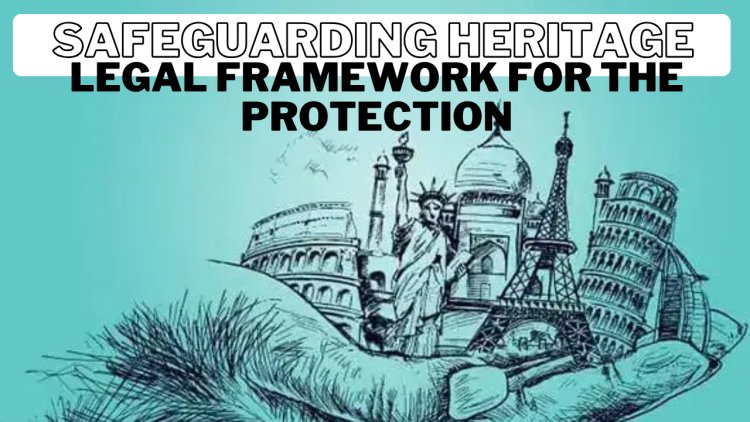Safeguarding Heritage: The Legal Framework for the Protection of Traditional Knowledge, Genetic Resources, and Traditional Cultural Expressions
This article provides a comprehensive examination of the legal framework governing the protection of traditional knowledge (TK), genetic resources, and traditional cultural expressions (TCEs). These elements form a crucial part of the cultural and biological diversity of communities globally. The article explores the international and national mechanisms aimed at safeguarding these assets, discussing challenges, opportunities, and the importance of striking a balance between preservation and innovation.

Introduction:
Introducing the intrinsic link between traditional knowledge, genetic resources, and traditional cultural expressions and their significance in the cultural and biological heritage of communities worldwide. The article outlines the potential threats to these elements, such as biopiracy, and sets the stage for the exploration of protective measures.
Traditional Knowledge: A Cultural Treasure:
Defining traditional knowledge and elucidating its various forms, including medicinal practices, agricultural techniques, and ecological wisdom passed down through generations. The article emphasizes the role of TK in sustainable development and the preservation of biodiversity.
Genetic Resources: Nature's Blueprint:
Exploring genetic resources as the biological foundation of traditional knowledge, encompassing plants, animals, and microorganisms. The article discusses the intricate relationship between TK and genetic resources and their contribution to scientific advancements.
Traditional Cultural Expressions: Artistic Narratives:
Defining traditional cultural expressions and examining their role in reflecting the identity, history, and creativity of communities. The article delves into the challenges faced by TCEs, such as misappropriation and unauthorized use.
The Legal Landscape:
Surveying the international legal framework for protecting traditional knowledge, genetic resources, and traditional cultural expressions. The article explores key treaties and agreements, including the Convention on Biological Diversity (CBD), the Nagoya Protocol, and the WIPO Intergovernmental Committee on Intellectual Property and Genetic Resources, Traditional Knowledge, and Folklore.
Challenges in Protection:
Analyzing the challenges associated with protecting traditional knowledge, genetic resources, and traditional cultural expressions. The article discusses issues such as the lack of clear legal definitions, difficulties in proving ownership, and the clash between intellectual property regimes and traditional communal ownership.
Intellectual Property and Indigenous Rights:
Examining the interface between intellectual property laws and the rights of indigenous communities. The article discusses the limitations of existing intellectual property regimes in fully capturing the communal and collective nature of traditional knowledge.
Biopiracy: Exploiting Nature's Knowledge:
Exploring the concept of biopiracy and its impact on traditional knowledge and genetic resources. The article discusses notable cases of biopiracy, highlighting the need for robust legal mechanisms to prevent the unauthorized commercialization of indigenous resources.
Access and Benefit Sharing (ABS):
Analyzing the principle of Access and Benefit Sharing as a mechanism to ensure fair and equitable sharing of benefits arising from the utilization of genetic resources and traditional knowledge. The article discusses the implementation challenges and potential improvements.
National Legal Initiatives:
Examining national legal initiatives undertaken by countries to protect traditional knowledge, genetic resources, and traditional cultural expressions. The article discusses the role of sui generis systems, community protocols, and the need for greater collaboration between indigenous communities and legal frameworks.
Opportunities for Collaboration:
Exploring opportunities for collaboration between indigenous communities, governments, and the private sector in the protection of traditional knowledge, genetic resources, and traditional cultural expressions. The article discusses the importance of respecting the autonomy and self-determination of indigenous communities.
Conclusion:
Summarizing the key findings and insights from the exploration of the legal framework for the protection of traditional knowledge, genetic resources, and traditional cultural expressions. The conclusion emphasizes the importance of striking a delicate balance between preserving cultural heritage and fostering innovation. The article underscores the need for inclusive and collaborative approaches that respect the rights of indigenous communities and contribute to the sustainable management of global biodiversity and cultural diversity.












